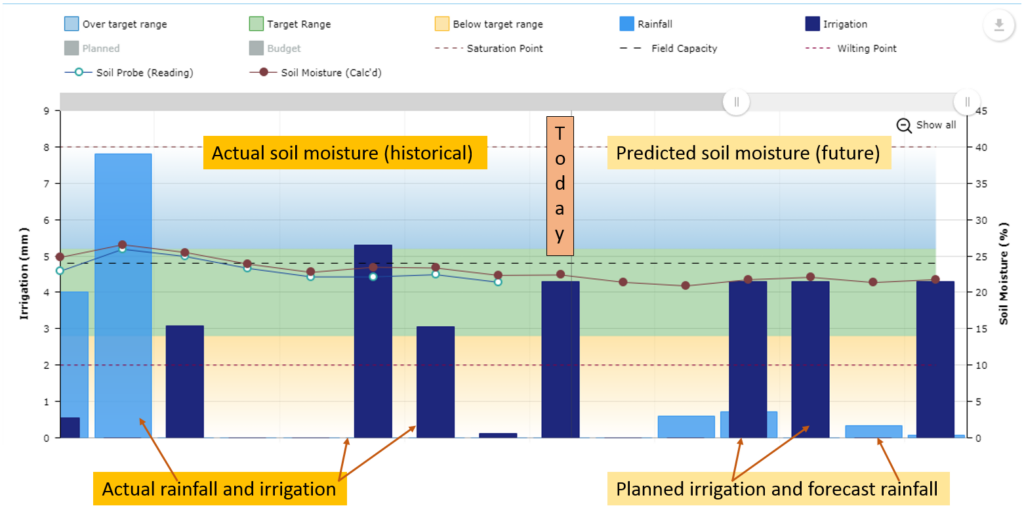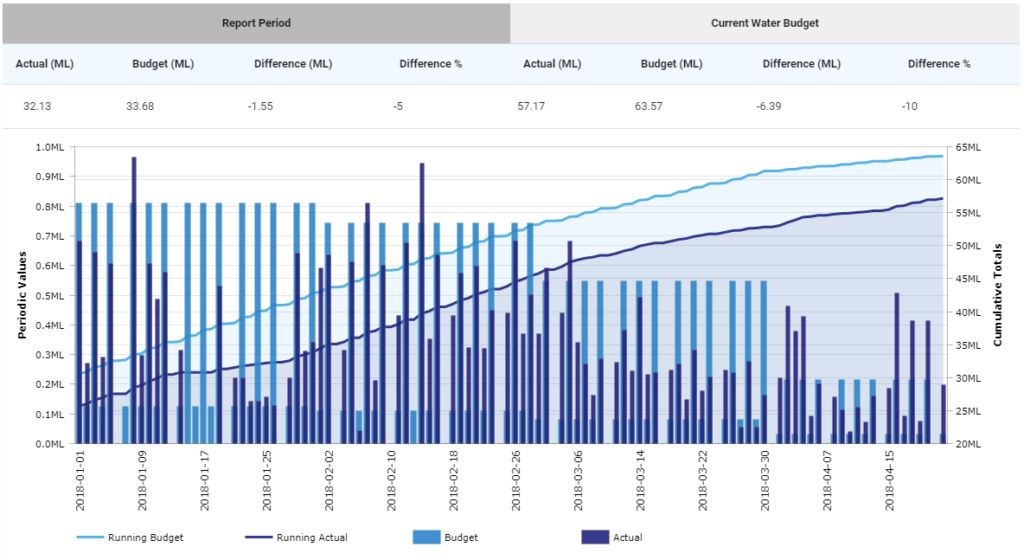SWAN Systems, based in Perth, Australia, has built an Internet of things (IoT) platform that helps farmers synthesize irrigation data from multiple sources for more precise irrigation. SWAN’s decision-support software allows for better irrigation and nutrient management, the optimized use of scarce resources, and better environmental outcomes. Currently active in Australia, New Zealand, Singapore, and the Middle East, SWAN is looking for partners for a trial expansion into the United States in 2020.
In this interview, Tim Hyde, the chief executive officer (CEO) of SWAN Systems, speaks with Municipal Water Leader Managing Editor Joshua Dill about the benefits SWAN’s platform provides to irrigators in Australia and around the world.
Joshua Dill: Please tell us about your background and how you came to be in your current position.
Tim Hyde: SWAN Systems has three founders—Rod Campbell, Ivor Gaylard, and myself. All of us have significant agricultural experience. I personally was born and raised in the Sunraysia region of Australia’s Riverland, which is geographically and agriculturally similar to California—it is hot and dry and irrigation is required to grow crops. I then completed a degree in horticulture and irrigation at Adelaide University in South Australia. After university, I grew subtropical crops, including table grapes, bananas, vegetables, and citrus fruits, for 15 years, using precision irrigation and nutrient strategies, often called open-field hydroponics. I then consulted for 10 years in this field. SWAN Systems essentially evolved from this consulting business.
Joshua Dill: Please tell us about your company, its history, and its operations today.

Tim Hyde: SWAN Systems is an IoT platform that helps farmers farm more precisely and increase the quality and yields of their crops. Rod, Ivor, and I knew how precious water is and how technology is the ideal way to optimize water and nutrient application rates and consumption for just about any plant or crop. The more we looked, the more we saw that the problem of water usage was endemic and global, with no easy solution. Our vision is to be a globally recognized independent software platform for managing water and nutrients and to help lead users to adopt precision agriculture. From its conception, it has taken 3 years to fully build out the platform, mainly due to the complexities of using different types of hardware.
Joshua Dill: Tell us about your products. Do you produce software, hardware, or both?
Tim Hyde: SWAN Systems is a software-as-a-service platform that provides solutions for the smarter scheduling and monitoring of water and nutrient applications. It uses sophisticated algorithms to process data from a number of different sources, including weather forecasts of rainfall, evapotranspiration, temperature, and wind speed; actual water application volumes taken directly from irrigation controllers; soil moisture data to reconcile the soil moisture balance calculations; and spatial data from satellites and drones to further reconcile plant health via normalized difference vegetation index (NDVI) imagery.
The intelligence of the system has been derived from many years working in the precision ag space, where
it is imperative to determine when and how much to irrigate and fertilize to optimize production. The client base, particularly Rio Tinto in the Pilbara region of Western Australia, demanded reporting and monitoring functionality, and this drove the development of SWAN’s compliance functionality. SWAN has developed this intellectual property into a web-based system that is now largely automated and can be scaled to cover a range of diverse applications.
Watering schedules are typically generated from historical data and often implemented with a “set and forget” mindset. Actual within-season variations mean that these historical averages are often inaccurate, leading to suboptimal water consumption, poor crop health, and ineffective fertilization. SWAN’s ability to use location-specific weather forecasts provides the ability to proactively manage weather volatility. The incorporation of the Australian Bureau of Meteorology’s 7-day rolling forecasts, which capture key variables of rainfall, evapotranspiration, maximum and minimum temperatures, and wind speeds, means that SWAN is always looking forward rather than relying solely on historical averages. Through its unique algorithms, SWAN provides a precise calculation of the optimal soil-moisture balance for the specific requirements of each user’s crop or pasture type.
SWAN’s incorporation of a nutrient module adds further functionality and uniqueness. As rainfall levels fall, users are relying more heavily on alternate water sources such as groundwater and recycled water. This necessitates an understanding of the nutrient loading of the source water, and issues around increasing levels of nitrates and phosphates need to be calibrated into fertilizer programs. Failure to do this will result in overapplication, which is expensive and can cause environmental damage through leaching and surface runoff. SWAN also permits the detailed calibration of the optimal nutrient-uptake curve for each crop or pasture. This means that end users are given the precise quantities and timings for the scheduling of their fertilizer programs, resulting in both financial and environmental benefits.
The aggregation of data from multiple sources and its presentation on a simple dashboard gives users quick and effective insight into their operations. Summary data can then be further analyzed to provide extensive site-specific detail. Users can arrange these data into groups that allow for reporting along specific lines such as crop type, variety type, maturity profile, geographic location, and priority rating for public use (particularly relevant for parks and ovals). These capabilities make it effective for users who manage multiple farms or different enterprises across a single farm.

We pride ourselves on not selling hardware. In agriculture, it’s often difficult to get access to precision technologies without replacing farm hardware. We want to work with farmers and the data they have. It’s surprising the amount of data available at a farm level—it’s just usually fragmented and located on many different platforms and thus difficult to use to make sound management decisions.
Joshua Dill: What problems do farmers have that your product steps in to solve?
Tim Hyde: We offer the optimization of water and nutrient resources. Often, water savings are possible, but they require taking surplus irrigation and applying it at a more suitable time of year to maximize yields and quality. Nutrient management is complex, so we simplify it and help ensure that the right nutrients are applied at the right time in the right quantities for a specific crop type. Benefits include better-informed decision making, simplified irrigation and nutrient management, the optimized use of resources (including water, nutrients, power, and labor), the maintenance of business intellectual property and knowledge, the facilitation of reporting and compliance, and better environmental outcomes.
Joshua Dill: What kinds of irrigation systems do the farmers who use your project use?
Tim Hyde: SWAN is highly configurable, so we work with a variety of irrigation types, including turf, golf-course irrigation, irrigation with reuse water and nutrient-rich water, agricultural irrigation using pivots or flood irrigation, and horticultural irrigation using drip and sprinkler systems. The principles of water and nutrients are exactly the same across all sectors, but each specific crop type or irrigation type requires refinement.
Joshua Dill: Have you worked directly with large original equipment manufacturers in order to integrate your software with their hardware?
Tim Hyde: We work closely with several systems. Valley’s AgSense panel is one example. We access the data directly and give the irrigator some extra information to customize their precision irrigation to a specific crop type.
Joshua Dill: Would you explain some of the decisions your decision-support system might help a farmer make? Does it make positive recommendations about things farmers should do at specific times?
Tim Hyde: SWAN acts as a guide. It looks at the soil- moisture balance with a view to applying a budgeted water volume. If the budgeted water volume is going to lead to dry or excessively wet conditions, SWAN helps plan exactly what is required to maintain a specific soil-moisture balance. The nutrients act in the same way.
Our dashboard is popular with larger agricultural businesses, as it gives a highly accurate assessment of soil moisture conditions, a farm’s total water usage, budgeted nutrients vs. nutrients actually applied, local climatic conditions, and satellite NDVI data, all in one place. We often have many streams of data, but the dashboard puts it all in one place, allowing for better data-based decisions.
Joshua Dill: In what countries are you operating?
Tim Hyde: We are currently operating in Australia, New Zealand, Singapore, and in countries in the Middle East.
Joshua Dill: Have you incorporated any user feedback interior design?
Tim Hyde: Customer feedback helps us ensure that we have the right product fit and that we understand what functions will be required in the future and what the demand for them is. We currently conduct an annual review with each customer. We intend to build an automatic feedback-solicitation feature in the near future.
Joshua Dill: How do you see your product developing over the next few years?
Tim Hyde: We intend to be the world’s best independent software for irrigation and nutrient management, so the product will keep evolving over time to meet customer demands and requirements. We are currently focusing on our local markets but intend to be operating in the Americas on a trial basis in 2020. We’re looking for suitable partners to help us commercialize the product and will be starting to look at different strategies toward the end of this year.
Tim Hyde is the CEO of SWAN Systems. He can be reached at tim@swansystems.com.au.
